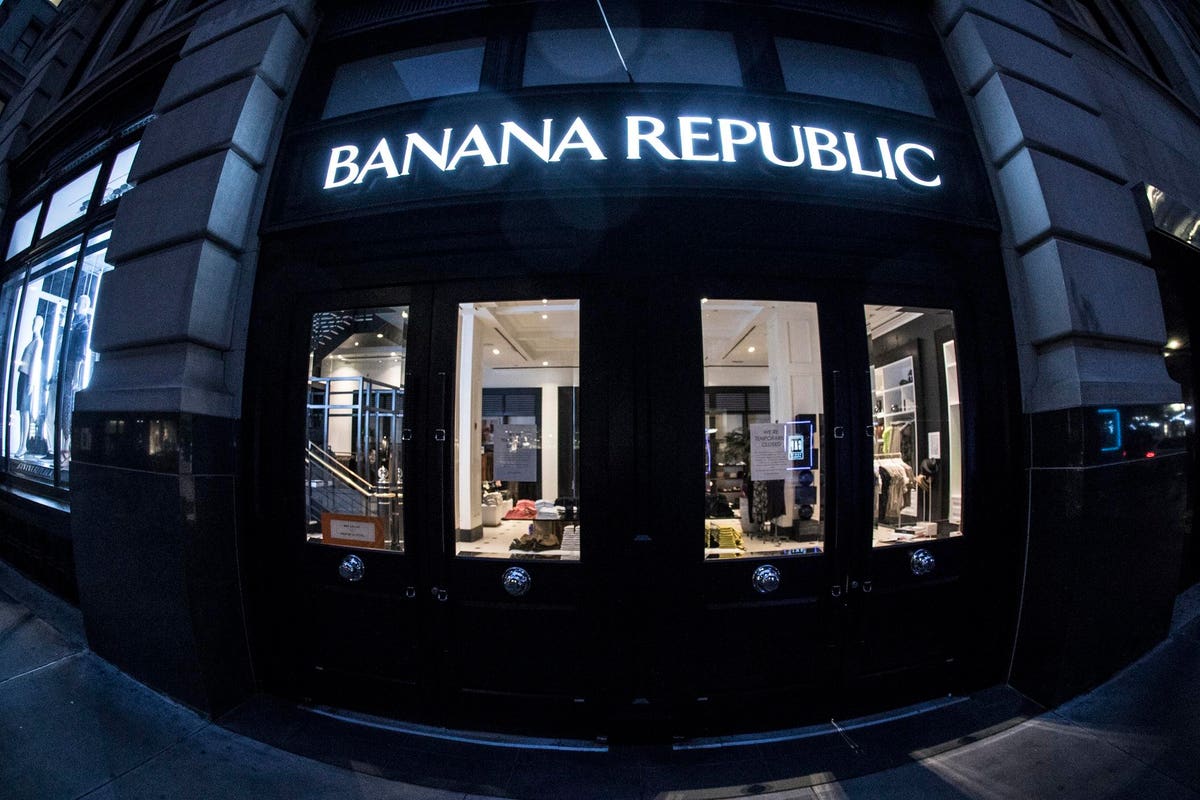Banana Republic just announced the introduction of a full suite of bedroom, living room and dining room furniture, lighting and home decorative accents to add to its initial entry into the home textile category earlier this year. It will operate under the name BR Home online and be available in select stores and in New York City and Los Angeles pop-ups by the end of September.
In keeping with the brand’s upscale fashion aesthetic and mission to “support the customer’s journey in a life well lived,” Sandra Stangl, Banana Republic president and CEO, stated, “We are driven by a desire for discovery and self-expression, representing a new way to outfit yourself and your home.”
Discovery is the keyword in that statement. Banana Republic is likely to discover that its customers don’t need the brand to move into the home space, where they already have an abundance of more established and authoritative options.
And because the brand is already struggling with its standing in the fashion space, how will its launch into home help it discover ways to sell more clothes to more people for more money?
Since timing is everything, Banana Republic is certain to discover it has picked the wrong time to launch into home, if there ever was a right time. I asked Banana Republic to correct me where I’m wrong, but they declined.
Market Timing Off
No matter how nice the BR Home selections look, it has set itself up for a fall by launching into a home furnishings market already in freefall. While the Census Bureau reports that retail sales in furniture and home furnishings stores are down only 4% through July, that data doesn’t reflect what many leading home brands are experiencing.
To date, three prominent furniture manufacturers and retailers – Mitchell Gold + Bob Williams, Klaussner Home Furnishings and United Furniture Industries, parent of Lane Home Furnishings – have shuttered.
And a sampling of heavy-hitter furniture and home furnishings brands shows how tough the market is right now:
- Wayfair was down 7.3% in most recent quarter, following a decline of 11% for fiscal 2022
- Williams-Sonoma
WSM
- La-Z-Boy
LZB
- RH down 21% through second quarter
- Overstock.com down 25% through second quarter, before it became BedBathandBeyond.com
- Hooker Furniture down 27% through second quarter
Every player in home is on pins and needles about how the rest of the year will fare, not to mention what’s ahead in 2024 after consumers spent the better part of the last four years investing heavily in their homes. Personal consumption of furniture alone rose from $135.6 billion in 2019 to $213.4 billion in 2022, according to the Bureau of Economic Analysis.
However, furniture is classified as a durable good, defined officially as a product with an expected lifespan of three years or more, yet consumers typically get seven to ten-plus years of wear from their upholstered sofas and chairs and many more from their dining room and bedroom furniture. It could be quite a while before recent buyers are back in the market looking for more.
“Finding success in a category that’s declining will be challenging,” Christopher P. Ramey, founder of The Home Trust International, observed. “Few trends in home furnishings point to a void waiting for Banana Republic to fill.”
Assuming Banana Republic has found a distinctive trend it can capitalize on, which is doubtful according to seasoned home industry watcher Warren Shoulberg, it will still have to take market share from established players that have managed through home downturns before.
“I’m just not sure this home collection will stand out in a very crowded space for contemporary, neutral products and non-threatening looks,” Shoulberg said.
“The problem is, what is BR bringing to the home space that isn’t available from any number of other brands, both in-store and online, with established businesses in home furnishings?” he added.
Company Timing Off
And then there is the even bigger question: why should a struggling fashion brand venture outside its lane into an entirely new category where it has no authority or proven credibility?
Given the brand’s track record, it can ill afford the danger of getting lost in its discovery journey into home.
Banana Republic reached its zenith in 2014, with sales peaking just under $3 billion, then it hovered around $2.5 billion through pre-pandemic 2019. After dropping to $1.5 billion in 2020, it clawed its way back up to $2.1 billion in 2022.
But the first two quarters of fiscal 2023 haven’t been kind to Banana Republic. First-quarter sales were down 13% from same period last year and 8% on a comparable basis. Second quarter continued its downward slide, down 11% on a topline basis and 8% in comp sales.
Leadership is taking its eye off the ball and should be working to fix the brand’s core, not add more trouble to existing troubles.
“Transcending fashion to furniture is a substantial leap. It’s difficult for any brand floundering in its core product to find a new audience in a new category,” Ramey said.
Maybe Gap Inc. management figures it can take chances with Banana Republic, which accounts for less than 15% of total revenues.
But with its total corporate sales flagging, dropping from $16.7 billion in 2021 to $15.6 billion in 2022, and its other flagship brands challenged too – Old Navy, down 10%, and Gap, down 7% last year – the BR Home launch seems almost a desperate rather than a strategic move at this time.
“Shouldn’t Banana Republic work on fixing their clothing before tackling home, which, no matter how successful, will still be a round error for the Gap
GPS
See also:
Read the full article here





